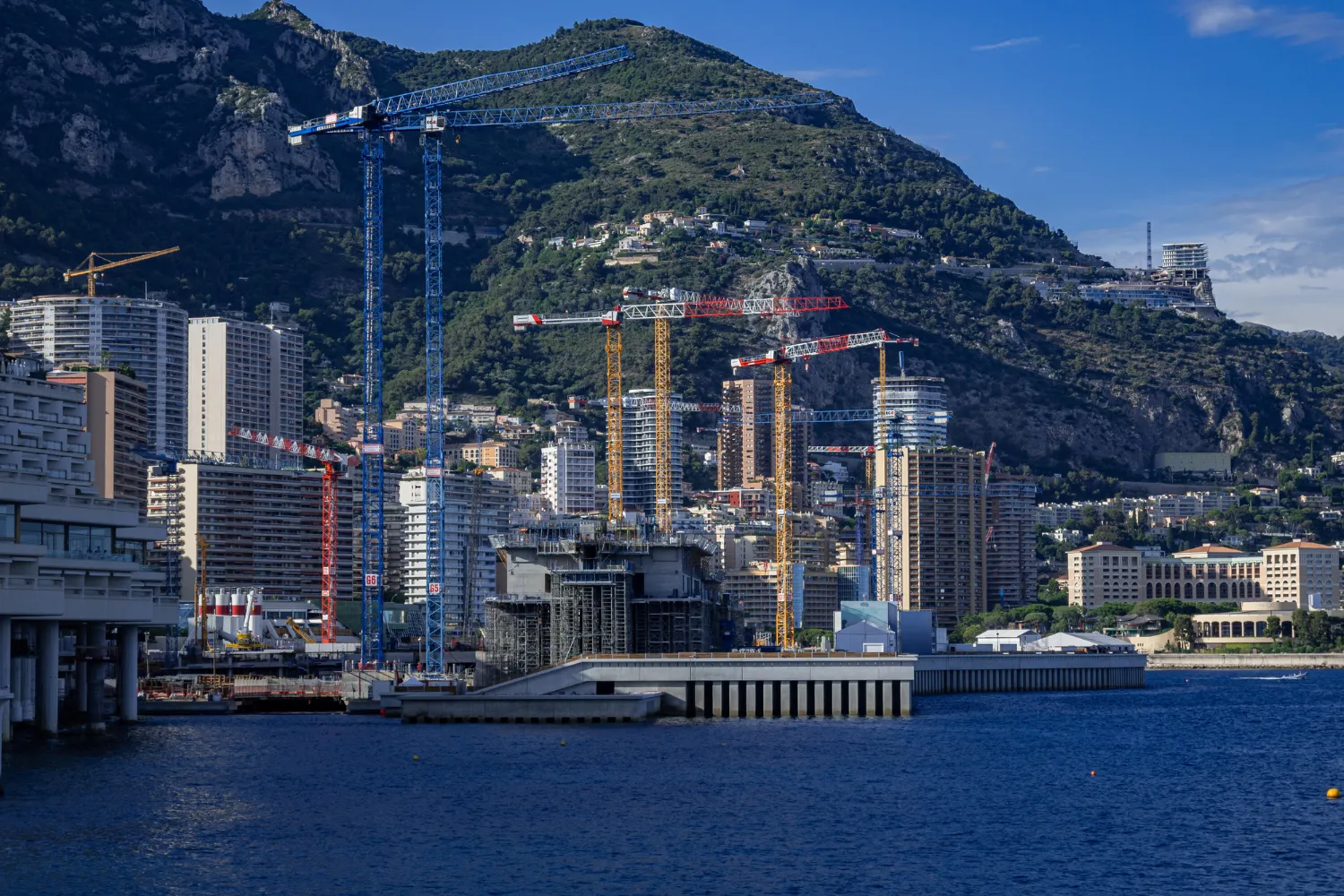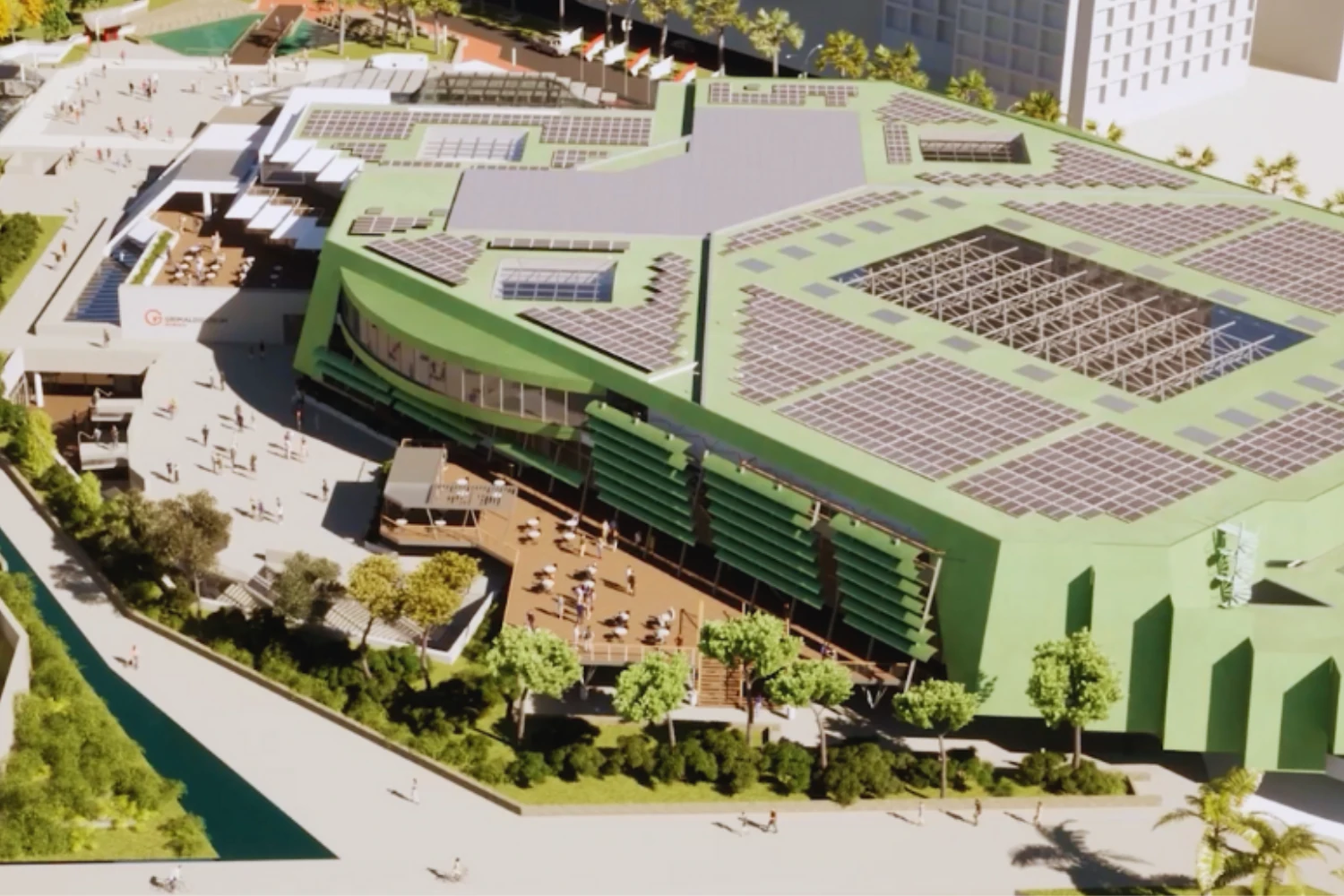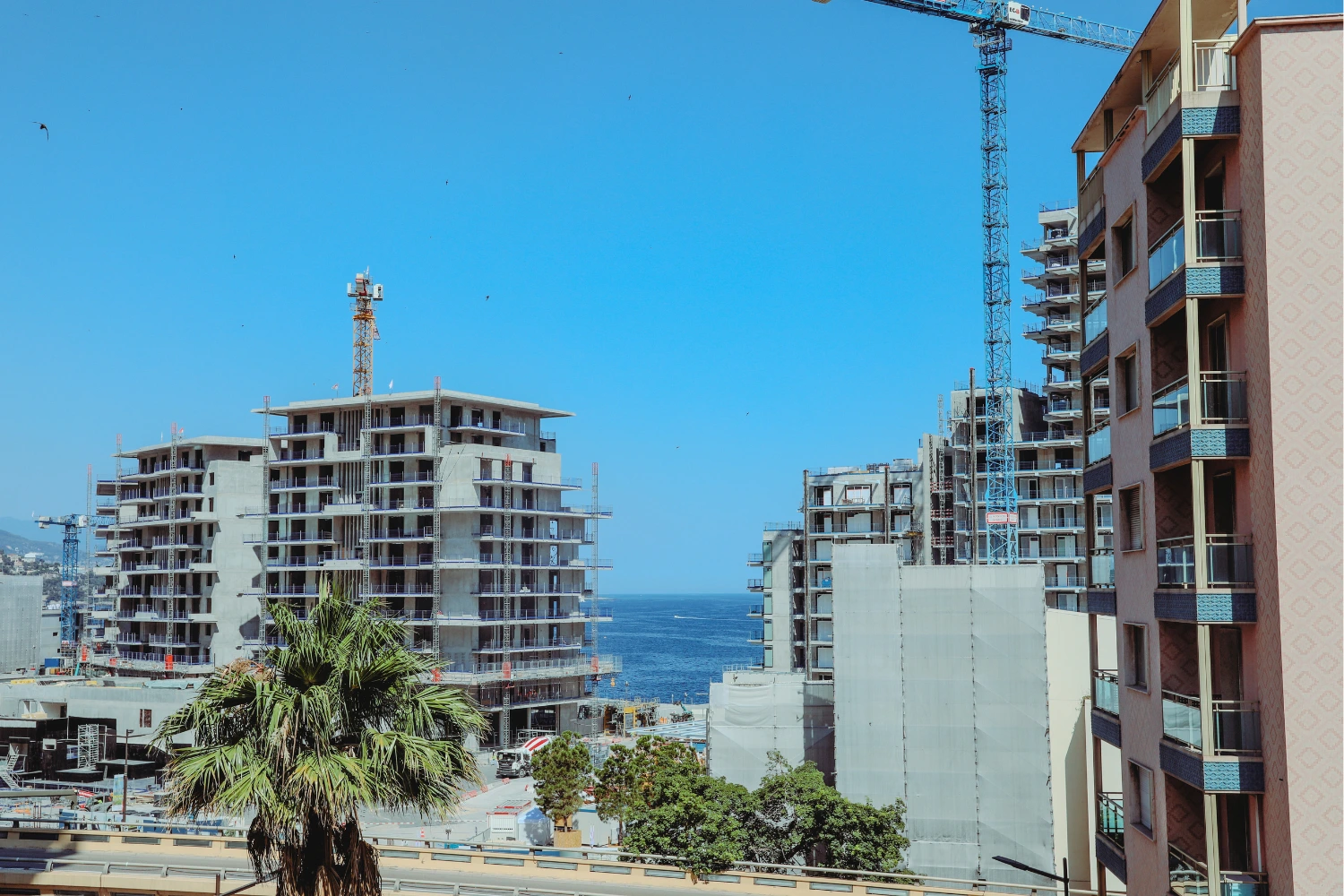
The conception of this new eco-district, whose delivery is planned in 2025 is the first ever in Monaco. Let’s go back on a both technological and environmental challenge.
Due to a small territory and a high population density, Monaco has made the choice to extend on the sea by developing platforms. The first constructions were carried out in 1907. Initially minor, this geographic expansion took a larger scope under the reign of Prince Rainier III, nicknamed the "Builder Prince" and continues today under the impulse of his successor, Prince Albert II.
The Portier area (which welcomes the Grimaldi Forum and the Japanese Garden today) was built in 1958-61. It was then followed by the Sporting area (1961-67) and Fontvieille (1965-71) medians, the creation of the Larvotto artificial beach (1965-67) and the extension of the Hercules port. In total, these installations have enabled the city to gain 50 hectares of land on the sea, which represents nearly 25% of the current Monegasque territory.
In 2015, in line with the former projects, a new project was adopted by the government to create an eleventh and last Monegasque neighborhood: l'Anse du Portier. For this, 6 hectares will be recuperated from the Mediterranean Sea.
At the end of the project ( the completion is scheduled for 2025), this eco-neighborhood will welcome 60,000 m² of luxury accommodation (5 buildings and 14 villas), office buildings and stores, and will allow the the Grimaldi Forum to expend , an underground public parking lot, a port of animation, a green park and a seaside promenade.
The initial challenge was to build new developable areas while minimizing the impact of this work on the marine environment.
On July 30, 2015, the government of the Principality signed a concession treaty for the project with SAM Anse du Portier. They partnered with Bouygues Travaux Publics, which has already proven experience in river and maritime developments.
The initial delivery was scheduled for 2015, but the construction work has been delayed and the new complex is expected to be completed in 2025.
In 2016, development work began. Bouygues TP teams first dredged the sediment. By October 2016, they had removed 650,000 m3 of sand.
Between Monaco and Marseille, the construction, transport and installation of the boxes required more than 1,000 people.
Once the boxes were placed, the filling began. 440,000 tons of sand taken from an undersea dune in Sicily now form the foundations of the new neighborhood.
Aware of the impact of such a project on the ecosystem, the government of Monaco is dedicated to building an eco-neighborhood that respects the underwater fauna and flora in a sustainable development logic. It is one of the most ambitious projects in Europe in this area.
It must be added that the new district of Anse du Portier is located between two protected marine reserves: the Larvotto reserve, home to Posidonia meadows, and the Spélugues reserve, home to a coralligenous drop-off.
Throughout the work, a number of measurements were taken to evaluate the quality of the water. In the same way, preliminary works allowed the removal of the 500m² of Posidonia meadows.
In addition, the addition of artificial underwater structures allows them to blend into the marine ecosystem. The boxes of the protection belt have been designed in a way that encourages their colonization by marine species. The walls of the boxes offer many of the same anfractuosities and reliefs as the Mediterranean underwater rocks. Also, artificial habitats have been arranged at the bottom of the boxes to facilitate underwater life.
Whether this strategy will pay off or not, won't be known for another ten years. In particular, it will be necessary to measure the quality of the water, the preservation of maritime resources and the reduction of nuisances.
For the monegasque authorities, it is also a question of obtaining the HQE Aménagement certification, the Biodiversity label, the Port Propre label and the British BREEAM label relating to the environmental assessment of buildings.

Few monegasque residents have the chance that the Monte Marina inhabitants have. This residence located in the Fontvieille neighborhood is almost “stuck” between the Mediterranean sea and the green picturesque...

The Grimaldi Forum di Monaco : An architectural jewel at the service of entertainment and culture An architectural marvel on the edge of the Mediterranean A true emblem of the Principality of Monaco...

Monaco continues its numerical transformation in the real estate sector with a clear ambition: become a major actor of Proptech in Europe. Since 2022, the Principality has intensified its efforts to make...

This site is protected by reCAPTCHA and the Google Privacy Policy and Terms of Service apply.